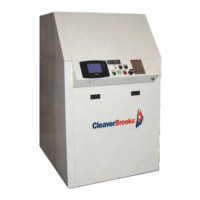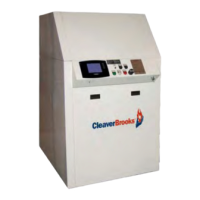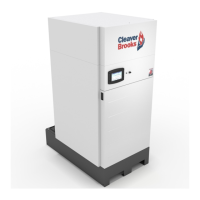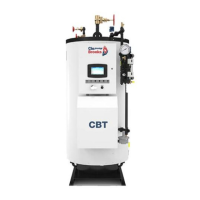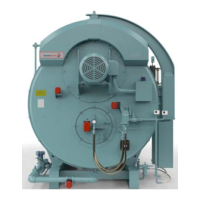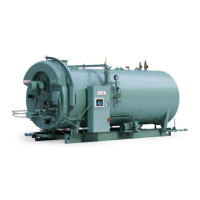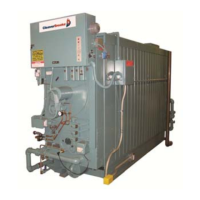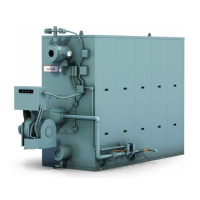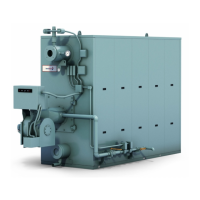CB FALCON
750-265 40
DHW Storage Operation
When the DHW storage feature is enabled, whenever any
normal DHW call-for-heat is satisfied (i.e. pump demand turns
off) the DHW storage demand begins and persists for the time
given by the DHW storage time parameter. During this time the
DHW pump is turned on, and the burner fires as needed to
maintain the DHW storage setpoint. DHW storage demand is
lower in priority than:
• CH demand,
• DHW normal demand, and
• LL slave demand.
DHW storage demand is higher in priority than:
• CH frost protection demand, and
• DHW frost protection demand
If another DHW normal demand occurs during the DHW
storage time, the storage timer is reset and DHW storage
demand begins anew when the DHW normal demand is
satisfied. If a CH or LL demand occurs during the DHW storage
demand, these take control of the burner; however, the DHW
storage timer continues to run. When the higher priority
demand is satisfied, then if the DHW storage demand is still
active (the time has not yet elapsed) then the boiler again
serves the remainder of the DHW storage demand. When the
storage time has expired then DHW storage demand ends and
does not recur until a normal DHW demand has recurred and
ends. The DHW setpoint and hysteresis are used in the same
way as existing setpoints and hysteresis values. This includes
use of the DHW hysteresis step time behavior, which modifies
the burner on/off thresholds over time.
The gains used by DHW storage are the normal DHW PID
gains. This occurs because the DHW PID block is shared by
the two demand sources.
• The DHW storage feature, when active, uses the demand
source selected by the normal DHW demand source.
• The DHW storage feature, when active, provides setpoint
information to the normal DHW PID block, which is used to
provide the firing rate when DHW storage is active (i.e. it is
shared).
DHW Storage uses the same pump as DHW demand.
The DHW storage feature is shown in Fig. 16.
Frost Protection (Hydronic only)
Frost protection, like other sources, generates pump demand
and rate.
Fig. 17. CH Frost protection.
The behavior of each parameter and feature is given below.
CH FROST PROTECTION
OUTDOOR TEMPERATURE
CH FROST
PROTECTION
ENABLE
OVERRUN TIME
LOAD
SET
(CLEAR > SET)
CLEAR
SLAVE STATUS
D
CH FROST
PROTECTION
PUMP DEMAND
CH FROST
PROTECTION
BURNER DEMAND
FROM DHW
FROST PROTECTION
BURNER DEMAND
SET: < 45°F
CLR: > 50°F
CLR: > T+4°F
T
SET: < T°F
SET: < 38°F
CLR: > 50°F
ON: > 41°F
FROST PROTECTION BURNER
DEMAND IS LOW PRIORITY, BUT
IT WILL FIRE THE BURNER IF NO
OTHER SOURCE IS DOING THAT.
FROST PROTECTION PUMP
DEMAND ALWAYS TURNS
THE PUMP ON; THIS IS NEVER
BLOCKED BY OTHER FUNCTIONS.
OUTDOOR SENSOR IS OK (OTHERWISE IGNORE IT)
CH FROST
PROTECTION
FIRING RATE
THE FROST PROTECTION FIRING
RATE IS ALWAYS THE MINIMUM
MODULATION RATE.
MODULATION SENSOR IS OK (OTHERWISE IGNORE IT)
INLET SENSOR IS OK (OTHERWISE IGNORE IT)
OUTDOOR
SELECTED CH
MODULATION
SENSOR
INLET (S1)
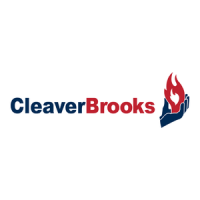
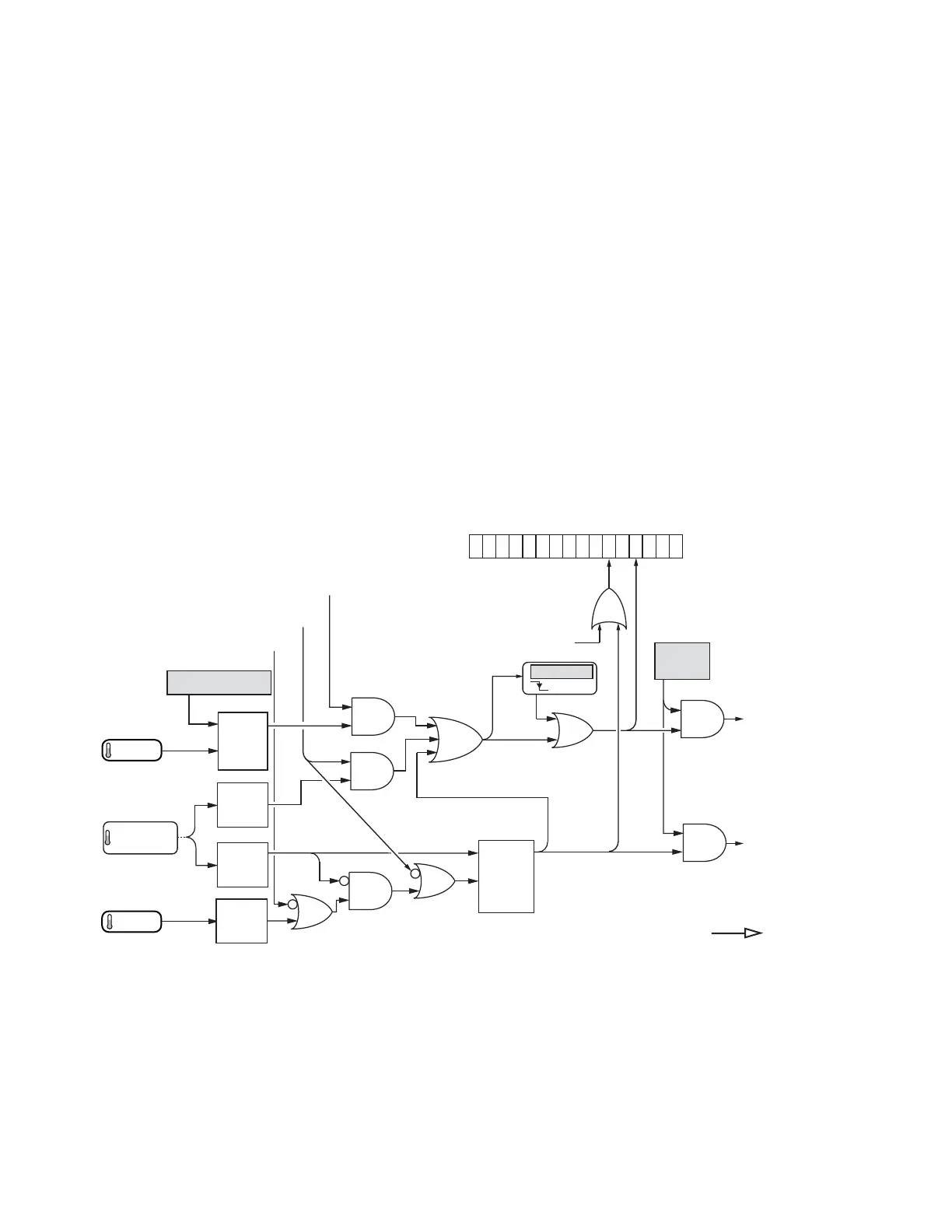